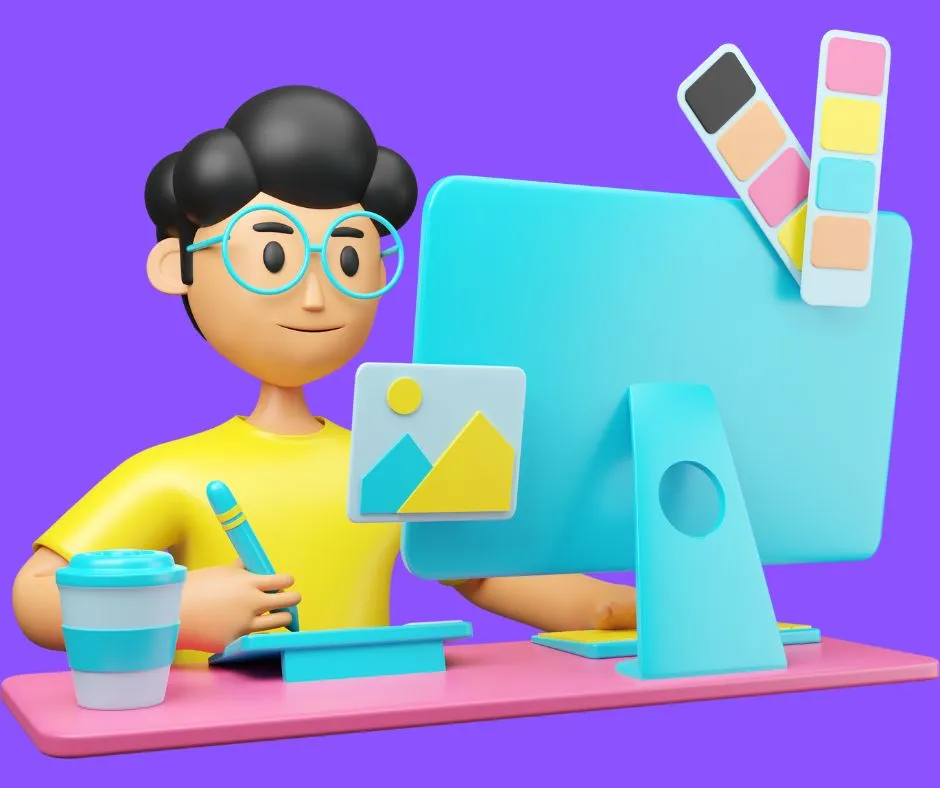
Ever get sucked into those explainer videos with smooth animations and dancing text? Or maybe you’ve been mesmerized by those fancy title sequences that add oomph to your favorite shows? That, my friend, is the magic of motion graphics. It’s like taking static design and infusing it with life, transforming simple shapes and illustrations into captivating stories that move.
But here’s the thing: motion graphics might seem intimidating at first. All those fancy software programs and technical terms can leave you feeling like a baby giraffe on ice skates. But fear not, fellow creative explorer! This guide will be your roadmap on “How Do You Make Motion Graphics,” even if you’re a complete beginner.
Step 1: From Brainstorm to Blueprint: Cooking Up Your Motion Graphics Idea
Before we dive into the animation abyss, let’s solidify the foundation of your masterpiece. Here’s where you brainstorm that killer concept:
- What’s the story you want to tell? Are you explaining a complex product? Showcasing a historical event? Maybe it’s a social media ad with a catchy message. Knowing your purpose will guide your entire creative process.
- Who’s your target audience? Imagine your ideal viewer. Are they tech-savvy teenagers or business professionals? Tailoring your visuals and style to resonate with them is key.
- What kind of vibe are you going for? Fun and playful? Serious and sophisticated? Thinking about the overall mood you want to create will help you pick the right colors, animation style, and even music.
Once you’ve got a clear vision, it’s time to translate it into a storyboard. Think of it as a comic strip for your motion graphics. Sketch out each scene, including the visuals and any text you want to include. This will be your blueprint throughout the animation process.
Step 2: Design Bootcamp: Shaping Your Motion Graphics Masterpiece
Now comes the fun part: creating the visual elements that will come alive in your animation!
- Software Showdown: Picking Your Perfect Program
There are a bunch of motion graphics software programs out there, but two of the big players are Adobe After Effects and Adobe Illustrator. After Effects is the animation powerhouse where you’ll bring your graphics to life. Illustrator, on the other hand, is fantastic for creating clean vector graphics (scalable images that won’t lose quality when resized).
If you’re a total beginner, there are also user-friendly online animation tools like Powtoon or Animaker that offer drag-and-drop functionality and pre-made templates. These are great options for getting your feet wet without a huge learning curve.
- Designing with Motion in Mind
When creating your graphics, keep in mind that they’ll eventually be moving. Here are some tips:
- Keep it clean and simple. Complex illustrations can become overwhelming in an animation.
- Embrace bold colors and clear shapes.
- Think modularly. Break down your graphics into smaller elements that you can animate individually for more dynamic movement.
Step 3: Animation Action!: Bringing Your Graphics to Life
This is where the real magic happens! We’ll use our chosen software to breathe life into your static designs. Here’s a simplified breakdown of the animation process:
- Importing your assets: Bring your illustrations and any other visual elements into your animation software.
- Setting the stage: Define the size and duration of your animation.
- Animating with keyframes: These are like checkpoints that tell your graphics where to be and how to move at specific points in time. By setting keyframes, you create the illusion of movement.
- Adding transitions: Play around with fades, zooms, and rotations to create smooth transitions between your graphics.
- Sound design and music: Don’t underestimate the power of audio! Adding sound effects and music can elevate your animation to a whole new level.
Step 4: Polish and Perfection: The Final Touches
Now that your animation is taking shape, it’s time to refine the details:
- Timing is everything! Adjust the speed and duration of your animations to achieve the desired pacing and rhythm.
- Refine your transitions. Make sure they flow seamlessly and enhance the storytelling.
- Proofread your text. Typos can be a real mood killer, so double-check that everything is spelled correctly.
- Export and Share! Once you’re happy with your masterpiece, export it in a video format suitable for your chosen platform (YouTube, social media, etc.).
Level Up Your Motion Graphics Game!
Even after conquering the basics, there’s always room to grow and refine your motion graphics skills. Here are some ways to take your creations to the next level:
- Embrace the Power of Presets: Many animation programs offer pre-made animation templates and effects that can save you tons of time. Think of them as training wheels while you learn the ropes. Once you’re comfortable, you can customize them to fit your unique style.
- Animation Principles are Your Best Friend: There are 12 core animation principles that govern the illusion of movement. Learning these principles will give you a deeper understanding of how to create natural-looking animation. Resources like YouTube tutorials and online animation courses can be a goldmine of information.
- Character Animation: Breathe Life into Your Illustrations: Who says motion graphics have to be static shapes? Adding character animation can make your explainer videos or social media posts even more engaging. Start by learning basic character rigging (the process of creating a digital skeleton that allows you to pose and animate your character).
- Experiment with 3D Animation: For a truly immersive experience, consider dipping your toes into the world of 3D animation. Software like Blender offers powerful 3D creation tools that can take your motion graphics to a whole new dimension (figuratively speaking, of course).
- Get Feedback and Share the Love: Don’t be afraid to share your work with friends, family, or online communities for feedback. Constructive criticism can help you identify areas for improvement and refine your skills.
If you’re looking for a trusted Motion Graphics Company, just contact Austin Visuals today! Our experts are always ready to help you out.
Common Challenges and How to Overcome Them
Every motion graphics designer faces challenges. Here are a few common ones and how to tackle them:
- Creative Block: Sometimes, ideas just don’t flow. When this happens, take a break, seek inspiration from other works, or brainstorm with colleagues.
- Technical Difficulties: Software can be intimidating. Invest time in learning through tutorials and practice regularly to become proficient.
- Time Management: Creating motion graphics can be time-consuming. Break down your project into smaller tasks and set realistic deadlines.
Are you curious about “Can You Post Drone Videos on Instagram?” Visit our blog page to learn all about it now!
Final Thoughts
The world of motion graphics is a playground for creativity. Remember, the most important thing is to have fun and experiment! With a little dedication and these helpful tips, you’ll be crafting showstopping motion graphics in no time, even if you started as a complete beginner. So, grab your favorite design software, unleash your inner animator, and get ready to bring your ideas to life in a dazzling dance of motion and color!
Tired of static presentations putting your audience to sleep? Breathe life into your brand with Austin Visuals! Our expert motion graphics team will transform your ideas into captivating stories that grab attention and leave a lasting impression. Let Austin Visuals turn your next project into a visual masterpiece. Contact us today for a free consultation and see the magic of motion graphics come alive!




